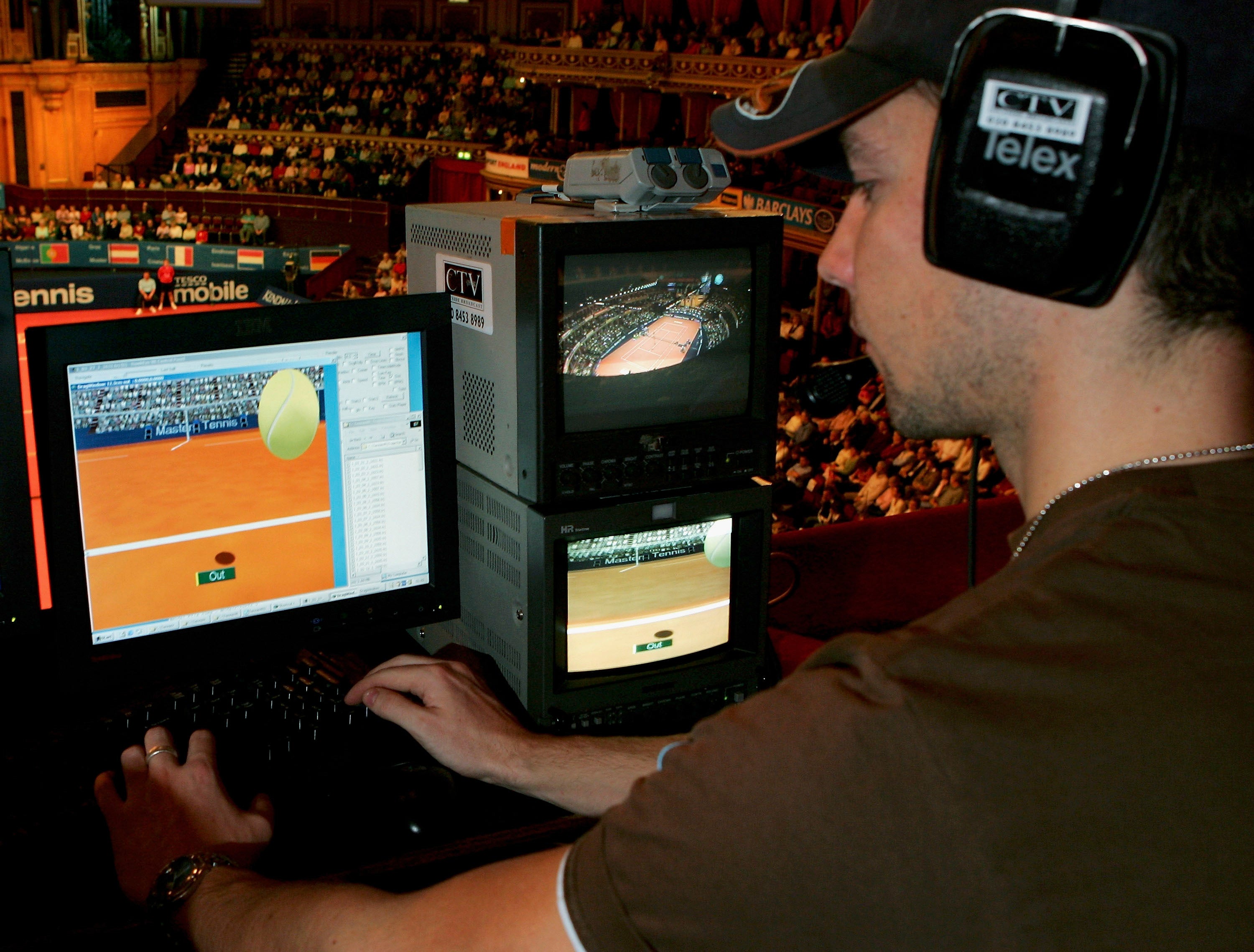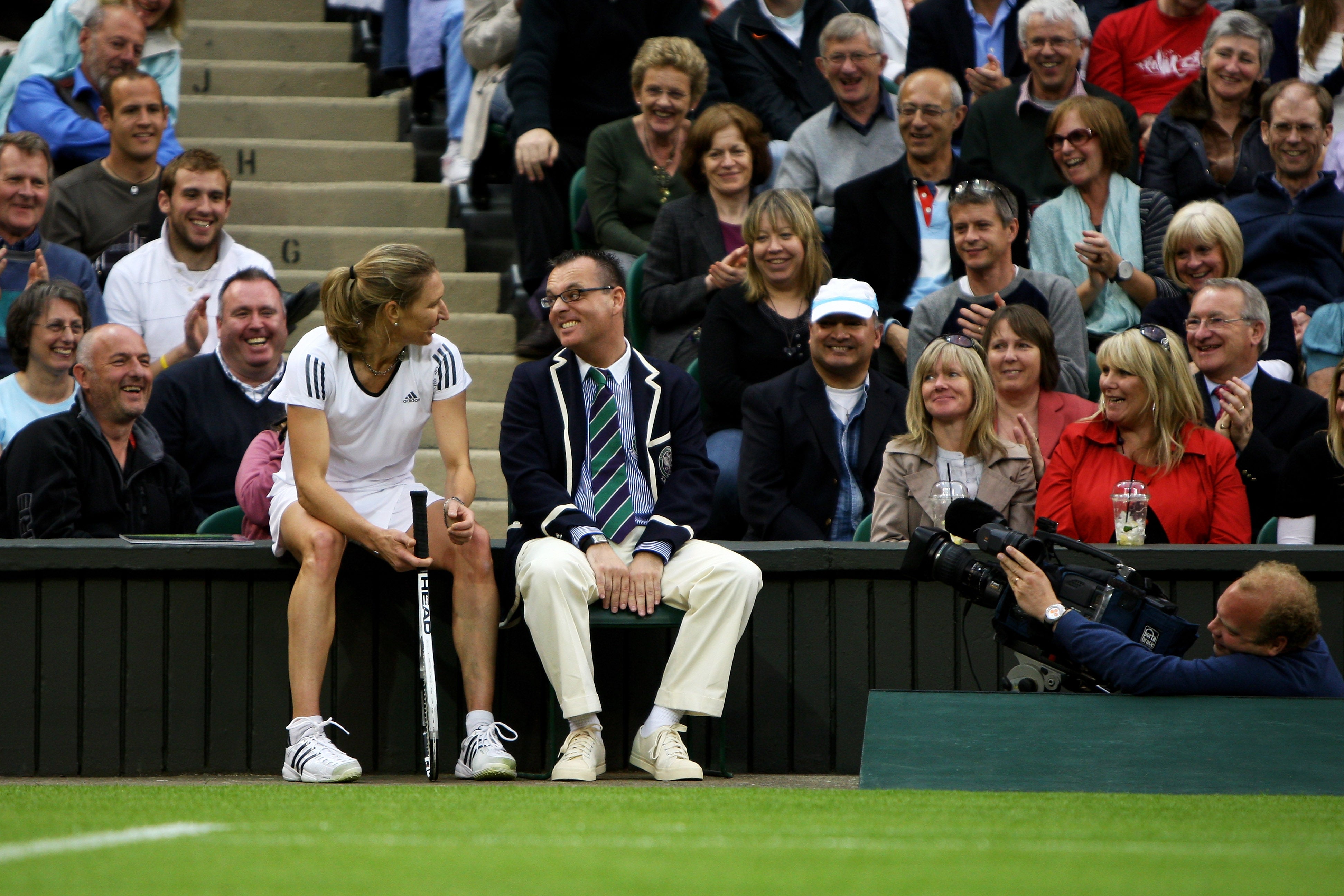
Your support helps us to tell the story
Our mission is to deliver unbiased, fact-based reporting that holds power to account and exposes the truth.
Whether $5 or $50, every contribution counts.
Support us to deliver journalism without an agenda.

Louise Thomas
Editor
Electronic line calling (ELC) technology will be implemented at Wimbledon for the 2025 Championships, bringing to an end the role of the line judge after 147 years patrolling the courts in SW19.
The tournament venue has taken the decision to install ELC on all 18 match courts, including Centre Court and Court One.
What is electronic line calling?
Electronic line calling was created by Hawk-Eye, the pioneering company leading the way in sports technology. The first Hawk-Eye system was developed by British computer expert Paul Hawkins in 2001, and has been deployed by multiple sports including cricket for leg-before-wicket decisions and football’s goal-line technology.
Hawk-Eye replays have been used in tennis since debuting at the US Open in 2006, allowing players to challenge questionable calls. But that will soon be a thing of the past as the same technology feeds back results in play, known as ELC or Hawk-Eye Live.
ELC was first used as an experiment at the ATP Next Gen Finals in Milan in 2018, and was adopted more widely during the Covid-19 pandemic. It will be used on all courts across ATP Tour events from 2025.
The Australian and US Opens have already replaced line judges with electronic calling, although the French Open still relies on the human eye. That is a little easier at Roland Garros, where the ball’s landing mark tends to show up on the dusty clay surface.
Players have widely supported the roll out, and Wimbledon organisers felt the tournament could become antiquated if it failed to keep up with technological advances in the game.

How does it work?
The ELC technology works by tracking balls using 18 cameras set up around the court. The cameras capture the ball’s movement as a computer interprets the location in real time, producing an accurate three dimensional representation of the court and the ball’s trajectory within it.
An automated voice mimics that of a line judge, with a loud call of “out!”, “fault!” or “foot fault” emitted within a tenth of a second.
A video operator will oversee the technology from an external room. Chair umpires will continue to take their seat overlooking the court to enforce the rules of the game.

What has Wimbledon said?
“The decision to introduce Live Electronic Line Calling at The Championships was made following a significant period of consideration and consultation,” said Sally Bolton, the chief executive of the All England Club.
“Having reviewed the results of the testing undertaken at The Championships this year, we consider the technology to be sufficiently robust and the time is right to take this important step in seeking maximum accuracy in our officiating. For the players, it will offer them the same conditions they have played under at a number of other events on tour.
“We take our responsibility to balance tradition and innovation at Wimbledon very seriously. Line umpires have played a central role in our officiating set-up at The Championships for many decades and we recognise their valuable contribution and thank them for their commitment and service.”

What will happen to line judges?
This year Wimbledon employed around 300 line judges for the two-week tournament. They typically work part-time, and many will now be forced to give up the role as both Wimbledon and ATP events such as Queen’s Club in June move to innovate.
Line judges will still be required at smaller tournaments and junior events. And some may need to be kept on standby, at least while the technology is implemented. Play at the US Open was suspended last month when a fire alarm went off in the office of the tech’s video operators, causing an evacuation.







